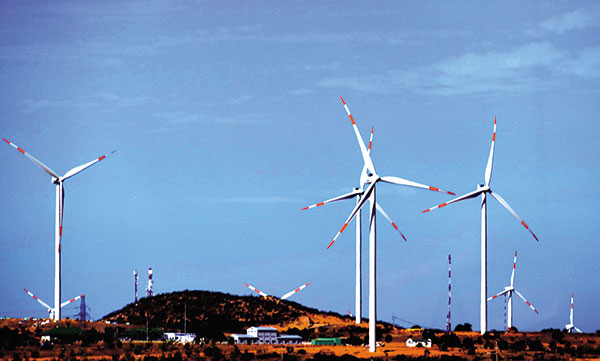Vietnamese authorities have started developing specific guidelines for selecting investors to develop renewable energy projects under their management, weeding out weak investors and out-of-date technology.

New guidelines have been established to select investors committed to renewable energy investment
Some provinces have introduced specific guidelines for renewable power projects under their management, including solar energy, as the segment becomes more appealing to investors.
The central province of Thua Thien-Hue recently issued Decision No.2393/QD-UBND to regulate grid-connected solar power projects with installed capacities of 3 megawatts (MW) or more.
The decision specifies that, in cases where there is more than one investor interested in the same site for solar project development, the provincial authorities will determine the winning bid.
It also sets out specific conditions for qualified investors, as well as the criteria that the provincial authorities will consider in rating each investor, including: legal capacity or presence in that province, proposed land use density, financial and technical capacity or experience, proposed technology and equipment, social and economic effects, and progress of project implementation.
Among the participating investors, those ranking highest will be selected for development of the relevant project. In cases where two or more investors have the same score, the province will select the investor based on energy efficiency and proposed technology.
In the central province of Ninh Thuan, local regulations require that the developer of a solar project must commence construction no more than one year from the date of issuance of its investment certificate.
To avoid delays, it is stipulated that the investor may not transfer the project in any form to other investors during the period of preparation, implementation, and construction of the project.
The central province of Thanh Hoa has issued a list of renewable power projects that are prioritised for development in the province. This list includes eight small hydropower projects (with a total capacity of 83.5MW), 11 biomass power projects (with a total capacity of 84MW), four solar power projects (with a total capacity of 280MW), and one wind power project (with a capacity of 20.6MW).
The Phu Yen People’s Committee recently adopted Decision No.17847/QD-UBND which includes an action plan for green growth in the period to 2020 with a vision to 2025, proposing the development of solar power projects with a total capacity of 1,169MW by 2025.
At the Vietnam Business Forum 2017, the power and energy working group also noted with concern the large number of solar plants applying for inclusion in the country’s power developmetn master plan. Using their experience of this issue in other markets, the working group drafted a set of guiding ‘common sense’ criteria for selecting the solar projects most likely to proceed to execution and attract investment to Vietnam.
The working group’s criteria and exclusion rules could help maximise the development of low cost solar power, and ensure efficient land use and allocation of resources. The criteria include guidelines on land clearance and compensation, and require that the grid connection must be ensured, and can still be maintained even if all new planned power projects in that immediate area are also executed. It is also stipulated that the project sponsor must be able to provide tangible evidence of its ability to invest equity and raise finance to execute the whole project, including guarantees for the level of power generation, and that the project sponsors have a track record of success in developing infrastructure investments, including energy generation projects in Vietnam.
According to the working group, “It has been common for some licensed companies to fail to pay in the charter capital prescribed in the provincial licensing procedure. We suggest the government consider revoking the inclusion in the power master plan of a licensed company, if within six months of the date of inclusion in the master plan an applicant company has not shown that there is a commitment of investment capital as defined in the investment certificate.”
VIR